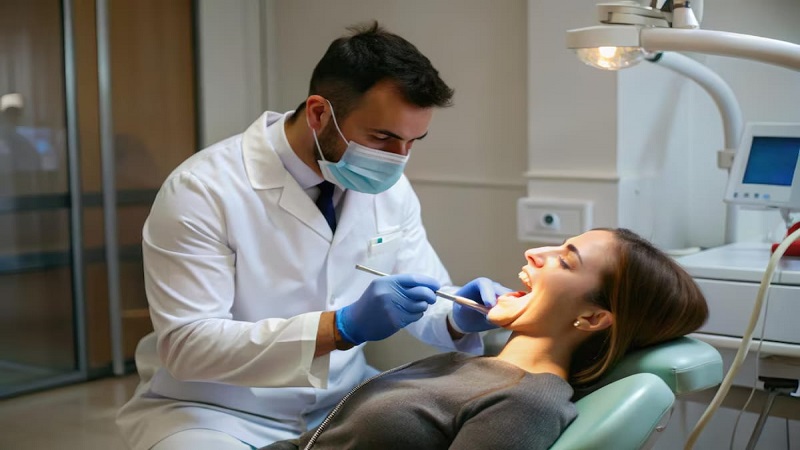Preventive health measures play an essential role in reducing disease spread and maintaining long-term community health. While modern healthcare provides effective treatment options, the primary goal remains to prevent illness before it begins.
Educating the public on effective preventive health strategies empowers individuals to make proactive choices for their well-being, reducing the demand for emergency services and chronic illness management.
This article explores key strategies and initiatives that promote disease prevention and contribute to a healthier, more informed population.
Raising Awareness Through Public Health Campaigns
Public health campaigns are instrumental in educating communities about the importance of disease prevention. These initiatives are designed to reach diverse demographics and often employ various forms of media, including digital platforms, posters, and community events.
Public health agencies focus on addressing widespread health concerns, such as seasonal flu prevention and vaccination importance, and promoting lifestyle changes like regular exercise and a balanced diet.
Community-focused efforts ensure that people from all backgrounds receive the information needed to make informed decisions about their health. Public health campaigns often include workshops, educational resources, and expert-led seminars, helping communities gain a foundational understanding of preventive measures.
Integrating education about topics like hygiene practices, vaccination schedules, and safe food handling enables people to adopt healthier habits.
In today’s digital age, many individuals interested in advancing public health initiatives seek an online health education degree to expand their expertise. This educational pathway offers tools and knowledge to design and implement preventive health campaigns, focusing on public awareness and resource accessibility.
With this foundation, graduates contribute meaningfully to their communities by crafting programs that encourage healthier choices, enhance knowledge, and ultimately reduce disease prevalence.
Importance of Vaccination and Immunization Programs
Vaccination remains one of the most effective preventive measures in modern medicine. Immunization programs help curb the spread of infectious diseases, some of which can have severe consequences if left unaddressed.
Vaccines have been successful in reducing the prevalence of conditions such as measles, mumps, and rubella, diseases that once had devastating impacts on public health.
Regular vaccination schedules, especially for children, are critical for establishing early immunity and protecting vulnerable populations, such as the elderly and immunocompromised.
The success of immunization programs relies heavily on public education and accessibility. Health agencies and schools play significant roles in distributing accurate information about the benefits of vaccination, dispelling myths, and encouraging compliance with recommended schedules.
In some areas, mobile clinics and health fairs offer on-site immunizations to make these services more accessible, particularly in underserved regions. With increased knowledge of vaccine safety and effectiveness, communities can better protect themselves against preventable diseases, contributing to overall public health security.
Promoting Healthy Lifestyle Choices
Encouraging people to adopt healthy lifestyle habits is another core aspect of disease prevention. Balanced nutrition, regular physical activity, and adequate sleep strengthen the immune system, helping the body defend against common illnesses.
Public health initiatives often promote dietary guidelines that emphasize the consumption of fruits, vegetables, whole grains, and lean proteins while limiting sugar and processed foods. Exercise recommendations, which typically include at least 150 minutes of moderate aerobic activity per week, also support cardiovascular health and mental well-being.
Health promotion efforts extend to stress management techniques, as chronic stress has been linked to numerous health issues, including hypertension and weakened immune responses. By teaching individuals ways to manage stress through mindfulness, time management, and relaxation techniques, communities can mitigate the negative health impacts associated with long-term stress.
Lifestyle-focused campaigns make it easier for individuals to incorporate small, manageable changes into their routines. For example, community centers may offer low-cost fitness classes, local farms may host produce markets, and some workplaces provide wellness programs that support employee health.
These accessible resources allow people to adopt healthier habits without drastic lifestyle shifts, fostering a culture of wellness.
Enhancing Access to Preventive Healthcare Services
Access to preventive healthcare services is essential for effective disease prevention. Routine check-ups and screenings help detect potential health issues early before they become severe or require extensive treatment. Preventive services, such as blood pressure checks, cholesterol screenings, and cancer screenings, provide valuable insights into an individual’s health status and highlight areas that may need attention.
Primary care providers play a crucial role in guiding patients toward appropriate preventive services based on their age, medical history, and lifestyle. Additionally, telehealth has made it easier for individuals to access preventive care from the convenience of their homes, particularly for those in remote or underserved areas.
By reducing the need to travel for minor health consultations or follow-up visits, telehealth expands the reach of preventive care. It helps ensure that more people receive the necessary screenings and advice to maintain optimal health.
Public health organizations also work to make preventive services affordable for low-income families, often partnering with non-profits and government agencies. For instance, free clinics or community-based health fairs offer screenings and preventive care services, bringing healthcare resources directly to those in need. Through these collaborative efforts, communities can ensure that everyone has the opportunity to prioritize their health, regardless of financial barriers.
The Role of Mental Health in Disease Prevention
Mental health is closely tied to overall physical health, and neglecting mental well-being can lead to various physical ailments. Stress, anxiety, and depression have been linked to increased risks of chronic illnesses, including heart disease, obesity, and diabetes. Addressing mental health as part of a comprehensive disease prevention approach can improve individuals’ overall health outcomes.
Public health programs are increasingly including mental health resources as part of their preventive strategies, offering support groups, counseling services, and education on recognizing symptoms of mental health issues. Raising awareness of mental health’s importance encourages individuals to seek help when needed, reducing the stigma around mental health challenges and fostering a healthier community environment.
Additionally, training educators and healthcare workers to recognize the signs of mental distress in their patients enables earlier intervention. For example, some community centers offer workshops on mental wellness and coping strategies, supporting individuals in managing their mental health alongside physical wellness efforts.
All in all, preventive health measures form the backbone of a healthy society, helping reduce disease rates and promoting wellness across populations. Through public health campaigns, vaccination programs, lifestyle promotion, improved access to healthcare, and mental health support, individuals gain the resources and knowledge necessary to protect themselves against various health threats. Empowering communities with preventive health information encourages proactive care and reduces long-term healthcare costs.
Incorporating these preventive strategies contributes to a resilient public health system, ensuring that individuals remain healthy and productive. By emphasizing prevention over treatment, communities can experience improved overall well-being and a reduced burden of disease.




